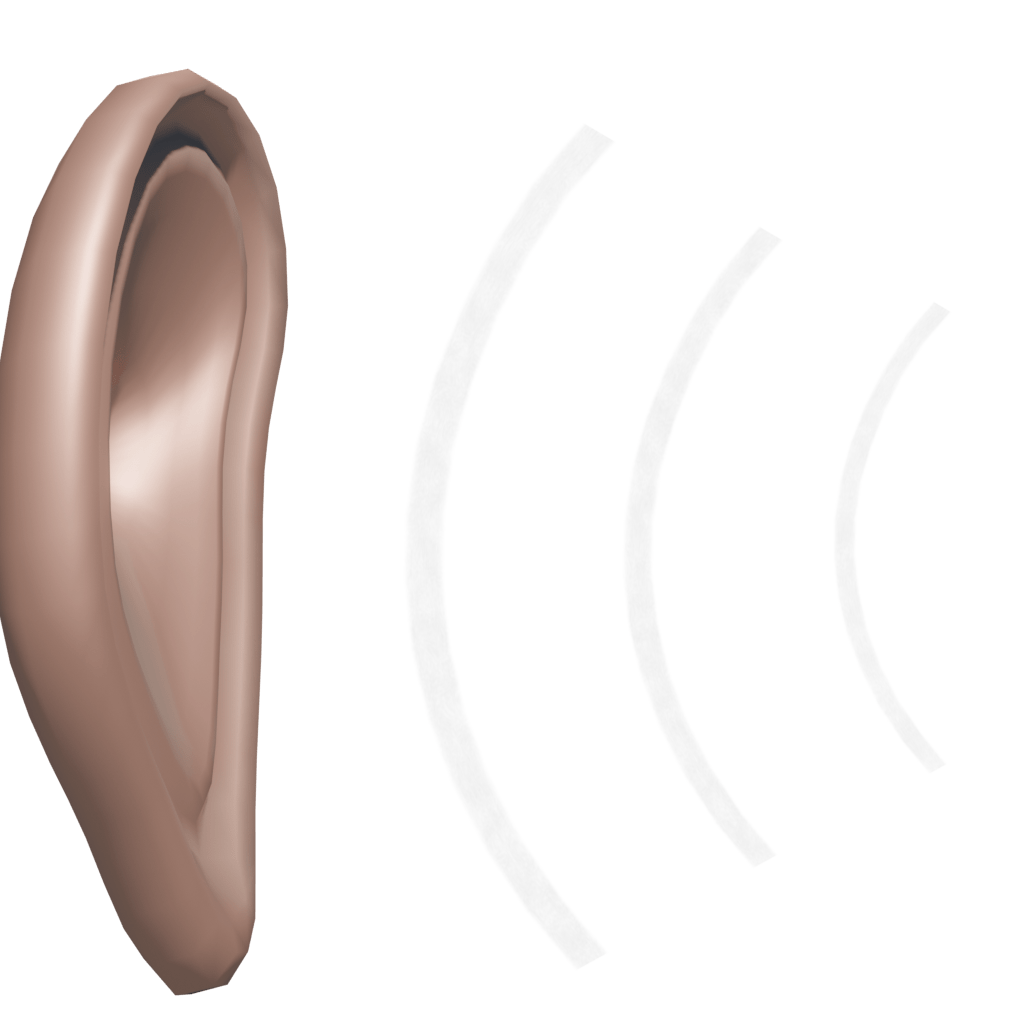Introduction
We have all been frightened by a loud noise at one point in our lifetimes. We usually adapt to these sounds and continue on as if nothing happened. But what if we couldn’t? This blog post explains how hyperacusis impacts my life every day and how it relates to autism.
What is hyperacusis and is it related to autism?
In the context of hearing, an elevated sense of hearing is known as hyperacusis. This is a condition where an individual will perceive most ordinary sounds as excruciatingly loud and deafening. Hyperacusis differs from a similar disorder known as ‘recruitment’, because the former does not become more severe with age while the latter involves a perceived increase in volume as deafness increases due to cochlea damage. (UCSF Health, n.d.)
Hyperacusis is much more common in individuals who have autism because the disorder tends to heighten the perception of hearing. An estimated 50% to 70% of individuals with autism will have hyperacusis which impacts their ability to participate in society and increases the difficulty of participating in school and work. (Sato, 2022)
In layman’s terms (a simple way of saying complex things), hyperacusis is when you perceive sounds louder than they normally are. It is as if your brain is turning up the volume on every sound. I experience all noise as a “rock concert” volume all the time.

It’s important to note that phonophobia (also known as ligyrophobia or sonophobia) differs from hyperacusis. Phonophobia is a fear of extremely loud sounds and the fear level is dependent on the individual’s anxiety, which will raise the perception of the volume. Phonophobia is a treatable anxiety disorder.
Hyperacusis is a consistent hearing disorder that isn’t determined by anxiety and is not caused by a loss of hearing.
Some researchers theorise that damage to parts of the auditory nerve may cause hyperacusis. The auditory nerve transmits sound to your cochlea so you can hear. Damage to the stapedius muscle (which regulates how strong the sound is inside your ear) is also a potential theory. A wide range of disorders associated with hyperacusis such as Bell’s palsy, Ramsay Hunt syndrome & Lyme disease involve damage to the facial nerves. (Cleveland Clinic, 2022)
How hyperacusis affects my daily life
The unusually high level of sound that I perceive means that I struggle to cope with any sound that is perceived as normal for the average individual, so I wear soft ear plugs to cope with this.
Any noise can cause individuals with hyperacusis such as myself to cover their ears with their hands which is a sign of physical distress from what is perceived as an excessively loud noise.
In my experience with the disorder, I have never been able to overcome hyperacusis, however I have had some success overcoming hypersensitivity with my other senses which are touch, sight, taste and smell.
Impact on my ability to participate in the community
Hyperacusis also makes participating in any communal activities difficult because of my heightened perception to sound. I am unable to participate in ten-pin bowling if there is a league competing as it is too loud for me to cope with the constant cheering of the crowd and rumblings of the balls on the alleys.
Mini-golf is much quieter. I used to play this type of golf often as a child than today. I prefer bowling because seeing the pins get knocked down is satisfying and playing on the arcade games that are also present at the bowling alley is fun despite the bowling alley being noisy at times.
Many community events and festivities are very loud and noisy so I try to avoid these and head to quieter areas. High amounts of tourism (particularly around the holidays) is usually too much for my coping abilities.
Grocery shopping in the supermarkets is a noisy experience for me because the supermarkets are filled with sensory triggers which includes flashing lights but mostly loud noise. At certain intervals an extremely loud and unexpected voiceover would be blasted across the store to alert a worker that they were required immediately to assist a customer in the store. This random loud voiceover caused a lot of meltdowns when I was much younger as a child. The rattling of the metal trolleys only added to the overstimulation, which I had every time that I went into a supermarket. So I used to dread going shopping when I was a child.

Shopping in supermarkets today I find a lot quieter than it was in 2005. A lot of supermarkets now tend to use plastic trolleys rather than metal trolleys which reduces the amount of noise greatly. The reduction of loud voiceovers has made the shopping experience far better for individuals with autism. Shopping has become a somewhat more enjoyable experience for me because of these changes and as I have become older and have learned more coping skills around hypersensitivity.
My experience with tinnitus
Tinnitus is a disorder that is likely to occur with hyperacusis. Tinnitus causes a “ringing” noise in the ear that can either be constant or sporadic. It can be either loud or soft (National Institute on Deafness and Other Communication Disorders, 2023). If tinnitus becomes very loud and then drops off, this is known as a tinnitus spike.
In my experience, tinnitus is very mild. However, this phantom sound is much louder with my ear plugs in, particularly with the left ear.
The cause of tinnitus is currently unknown (National Institute on Deafness and Other Communication Disorders, 2023), but it often accompanies hyperacusis, autism and other conditions as well. Damage to the tiny hairs inside the cochlea may result in tinnitus.
For me, tinnitus began to develop very gradually in my early 20s, after my adult-onset temporal lobe epilepsy (TLE) diagnosis. By my mid to late 20s, I already had developed tinnitus, but I barely noticed it developing.
How I react to sound
Any sound louder than 75db (such as an alarm clock) can activate my flight instinct, causing me to run away and withdraw. This is problematic and dangerous in car parks and around roads. Sounds that I am unable to control cause the strongest reactions in most cases. My reaction is strongly dependent on the type of sound, the tone of the sound and how unexpected it is. Below is an explanation on how I react to different sounds.
Coping with dogs
I have never enjoyed dogs because of their unexpected barking which causes me to become distressed and anxious from the anticipation of the sound volume. This is notably true with breeds of dogs that range in sizes from medium to large as well as small dogs such as the maltese, jack russel and shih tzu breeds. I am less reactive to pugs because I grew up with this breed and they do not have a loud or yappy bark unlike other breeds. (They do snore like crazy! Worse than humans! 😆)
Dogs that bark excessively can exacerbate my anxiety especially if I’m already stressed.
Coping with birds
Certain species of Australian birds such as the Little Corella, sulphur crested cockatoo and galah have loud screeches. I am very reactive to the unexpected screeching of these birds and my anxiety also increases from the anticipated sound. Habitually, these birds will fly across our property twice a day in the early morning & late afternoon, mostly to feed on various fruits and nuts.
These birds form large flocks ranging from 50 to 100 birds. They are monogamous, pairing together for up to 60 years. They seldom wander from the flock. These birds have the capability of traveling large distances within 15-20 minutes, but they prefer not to. (Australian Geographic, 2021)

Attribution:
Roosting Corellas by danieldouch | License: Creative Commons 0
Another bird that I dislike due to my hyperacusis are roosters due to their loud calls that they make. These loud, drawn-out calls are also known as a crow. My heightened perception to sound makes me refrain from being in proximity to any roosters due to the anticipation that they may start crowing.
The crow of a rooster is an ear-splitting 130 decibels. (Steele, n.d.).
Contrary to popular belief, while a rooster does crow at first light, they also crow whenever they are feeling threatened, being protective of their territory or as part of their routine. It’s not uncommon for me to hear a rooster from a nearby countryside property at night. 🐓
Most of the anxiety that I got from the noise that birds made came from a coping strategy known as projection.
In psychology, the term “projection” mostly refers to psychological defense projection. This is an attempt at placing your negative feelings, thoughts or aspects onto something else and trying to assign these emotions to another entity, such as an individual or group (Psychology Today, n.d.).
In my case the majority of my projection was aimed at cockatoos and at any bird that made a loud sound.
Coping with horses & cows
I have had a mostly peaceful coexistence with our horses because I grew up with them and they are also very quiet most of the time. When they do communicate, the loud and unexpected vocalisation can easily startle me because I am very sensitive to loud sounds. Our horses can become noisy if they are hungry or when there are other horses in the neighbouring property communicating with them. 🐴
I have also coexisted peacefully with cows as well. We have hundreds of cows that surround our 10-acre property and despite so many that surround us, we are in complete silence except for the occasional cow that is heard on a distant hill. If the cows happen to be mooved to a new paddock, the remaining ones start trumpeting their heads off all night until the morning! 😆
The high amount of vocalisation that occurs when the stock is rotated to other paddocks is because cows (as well as horses) are herd animals. If these animals either become separated or split from the herd, this results in separation anxiety so they call back and forth to try and let each other know that they are safe.
I prefer cats over dogs, cows and horses because of their cute appearance and independence. They tend to be mostly quieter than dogs, but not every cat is quiet. My cat Lilli can be quite the noisy Princess at times! 🐈
Coping with winds & thunderstorms
Winds are a challenge for me to cope with in the context of hyperacusis because the trees make a roaring sound as the wind blows through them and windows tend to rattle. This causes my anxiety to increase from stress. Next to thunderstorms, I find strong winds the most challenging to cope with due to the variability in the strength of the wind and how sudden these strong winds can occur.
In the context of hyperacusis, thunderstorms can be challenging for me to cope with because the sound of thunder is more than 120 decibels. I also find the sound of rain falling on a tin roof to be a major challenge especially when the rain is heavy. To cope with thunderstorms and strong winds, I use a low dose of Valium (known as diazepam) along with my ear plugs to decrease my anxiety.
Coping with electronic devices
I usually can cope extremely well with most electronic devices because I have control over the volume of the sound that is being output. A good example of this principle would be a radio and a computer because both devices include a way to control how loud or soft the sound coming from the speakers are.
Coping with vehicular noise
I find urban areas and many large roads extremely challenging for me to cope with due to high amounts of traffic. The loud roaring from car engines, motorcycles and semitrailer trucks make visiting to any urban area very difficult, which is why I prefer the countryside because the lower amounts of traffic contribute to a more sensory-friendly environment. 🚗
The transition from traditional petrol-powered vehicles to electric vehicles (EVs) is slowly creating a more sensory-friendly environment in urban areas. Since EVs have an electric motor rather than an internal combustion engine, they are very quiet when in operation which is why I prefer the silence of EVs as opposed to the noise of traditional petrol-powered engines. In Australia, gasoline is known as petroleum.

Created with the 3D modeling software Blender (version 4.2.3 LTS & rendered with version 4.0.2). Copyright © Zachary Wright.
Princess Lilli Lilac

While Lilli cannot help reduce my hyperacusis (as she is a cat), she does help reduce the anxiety caused by it to an extent, and helps to keep me calm in loud situations. We have had a very deep friendship since she was an 8 week old kitten for many years, and we love each other very much. 💜
Conclusion
Life is more challenging for me with hyperacusis, but I still continue to navigate my way through life with this disorder and find ways to cope with it. I have found that using a toolbox strategy is also very effective for coping, although this heavily depends on the situation I’m in. Share your thoughts in the comments and I shall see you on the next blog! 📰
Disclaimer: The information I provide in this blog post is from my personal experience with hyperacusis and is not meant to be taken as medical advice. Please consult a qualified medical professional for advice, treatment or knowledge on hyperacusis.
References
UCSF Health. (n.d.). Hyperacusis. https://www.ucsfhealth.org/conditions/hyperacusis
Sato, K. (2022). What is the mechanism of loudness hyperacusis in autism? Medical Hypotheses, 159, Article 110759. https://doi.org/10.1016/j.mehy.2021.110759.
Cleveland Clinic. (2022, October 21). Hyperacusis: hearing sensitivity causes & treatment. https://my.clevelandclinic.org/health/diseases/24320-hyperacusis
National Institute on Deafness and Other Communication Disorders. (2023, May 1). What is tinnitus? https://www.nidcd.nih.gov/health/tinnitus
Steele, L. (n.d.). How loud is a rooster’s crow? https://www.fresheggsdaily.blog/2017/01/so-just-how-loud-is-roosters-crow.html
Australian Geographic. (2021, August 19). Sulphur-crested cockatoos: Australian icon. https://www.australiangeographic.com.au/topics/wildlife/2021/08/sulphur-crested-cockatoos-australian-icon/
Psychology Today. (n.d.). Projection. https://www.psychologytoday.com/au/basics/projection
